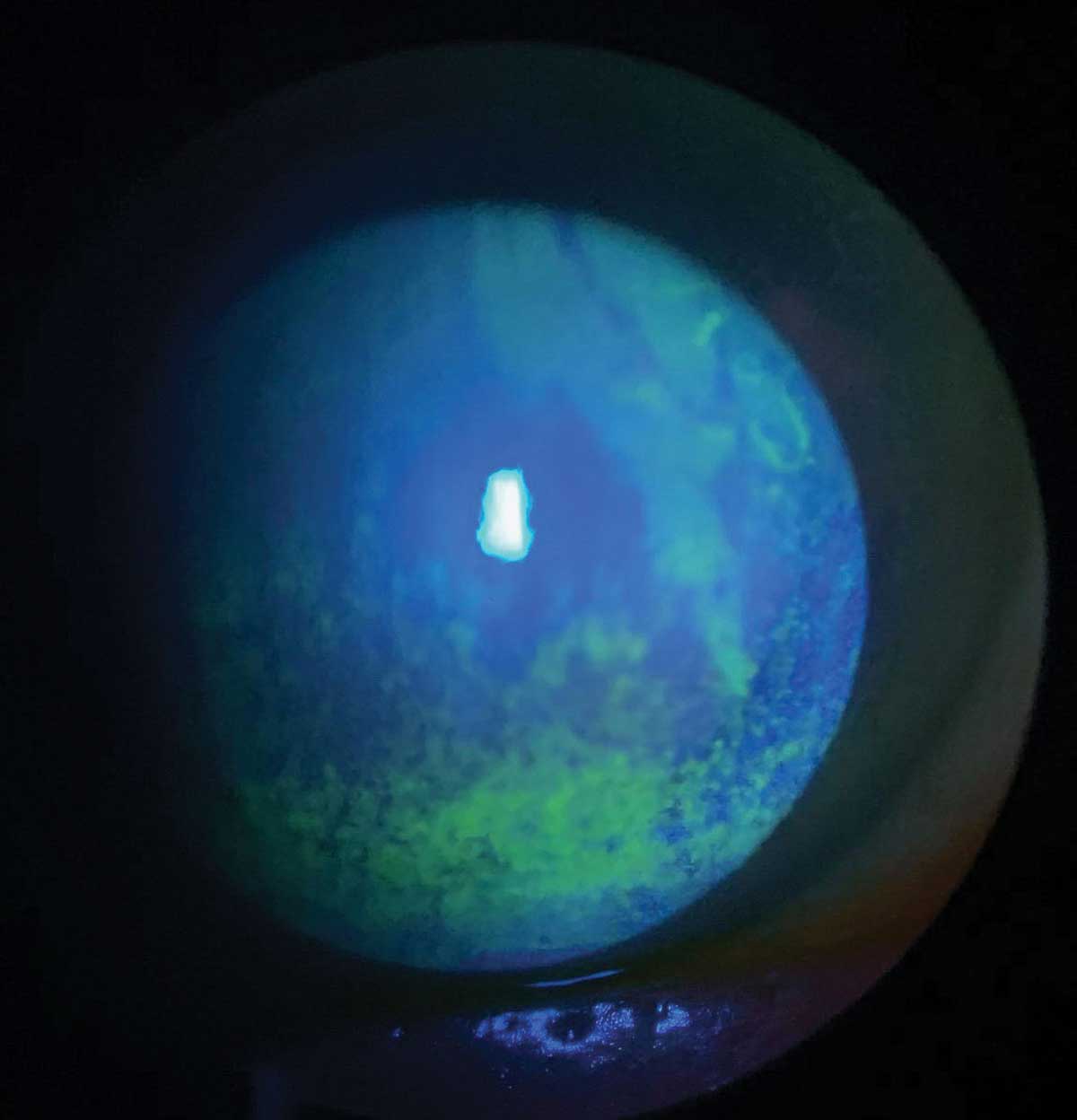 |
While frequent, consistent use of eye drops is indicated in dry eye, most patients struggle with this regimen. Photo: Candice Tolud, OD. Click image to enlarge. |
Medication adherence is notoriously difficult to achieve in many spheres of eye care, and dry eye management in particular. To help understand the factors at play, a recent web-based patient survey investigated real-world patterns of use, the reasons behind drop instillation and the relationship between usage patterns and subjective symptoms.
A total of 2,645 participants were enrolled. The study showed that most did not instill eye drops at the specified frequency, nor were they instructed about the necessary drop frequency by eye care providers or pharmacists.
“The actual frequency of instillation by patients was less than that specified in the package insert, and eye drops were instilled at the specified frequency in only about 10% of patients,” the authors explained.
The most common reason was because the participants used them on an as-needed basis only to alleviate subjective symptoms (e.g., dryness, eye fatigue). “More than 60% of participants instilled them when subjective symptoms became apparent,” the authors noted.
However, they noted, patients may have immediate recurrence of symptoms “because the vicious cycle between the abnormal functioning of the corneal epithelium and the instability of the tear film layer still exists.”
This shows it’s important to continue using the drops in order to prevent the symptoms from appearing, rather than using them to suppress the symptoms once they occur.
Lastly, the authors examined the characteristics of the patients who regularly instilled at the specified frequency (the fixed-use group). Those participants were older, had a lower rate of contact lens use and a lower rate of over-the-counter eye drop use. “These results suggest that in order to instill regularly at the specified frequency, it may require removal of the factors, such as age, contact lens use and over-the-counter eye drop use, that interfere with instillation behavior in order to make instillation habitual.”
To achieve the best possible results from treatment, eye doctors “need to impress upon patients the importance of regular instillation at the frequency specified in the package insert, while taking patient characteristics such as age and concomitant medications into account,” the authors noted.
Uchino M, Yokoi N, Shimazaki J, et al. Adherence to eye drops usage in dry eye patients and reasons for non-compliance: a web-based survey. J Clin Med. January 12, 2022. [Epub ahead of print]. |

